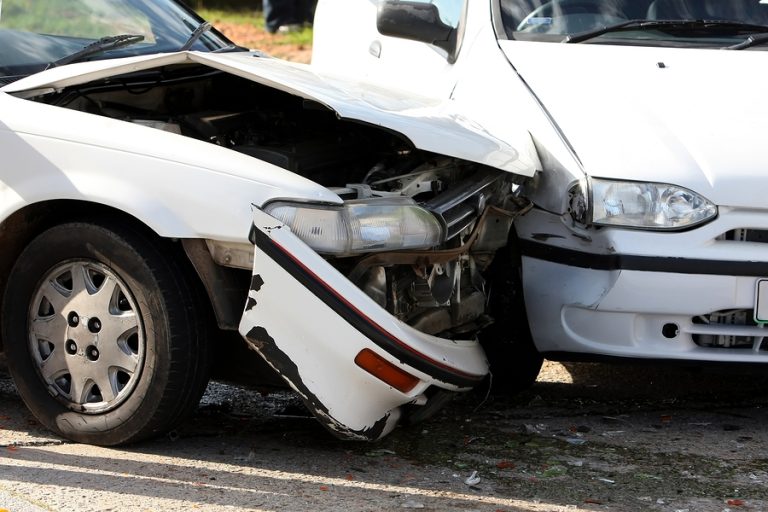All of us likely remember what we were taught as children when it came to crossing streets: Look both ways before you cross and make sure the road is clear. It all seemed simple enough when we were told to do this before crossing a street, but many of us likely remember that it was actually much more complicated when we tried to do this ourselves. Many of us found ourselves running, not walking across a street because we suddenly noticed a car coming. Pedestrian accidents happen every day, and much is being done in terms of learning about them so we can bring these troubling numbers down. A recent study looked into the issue of children and potential pedestrian accidents. The study revealed some interesting information regarding why children can struggle to cross the street, especially when it’s in a busy environment.
About the Road-Crossing Study
Researchers at the University of Iowa completed the study. Those who would like to review a description of it can find it here. Children who were 6, 8, 10, 12 and 14 years old participated. They stepped into a 3-D virtual environment that depicted a typical road. Virtual vehicles drove by at 25 miles per hour, and the children were asked to cross one lane of traffic, which measured approximately 9 feet wide. The researchers recorded each age group and measured the percentage of crossings that led to pedestrian accidents. Below is what they found:
- 6-year-olds were hit by vehicles 8 percent of the time.
- 8-year-olds were hit by vehicles 6 percent of the time.
- 10-year-olds were hit by vehicles 5 percent of the time.
- 12-year-olds were hit by vehicles 2 percent of the time.
- 14-year-olds were not hit by a vehicle once.
Each child attempted to cross the road 20 times. 10 children participated in the study, or two for each age.
The researchers reached two conclusions regarding the clear trend noted above, in that younger children were more likely to be involved in pedestrian accidents than those who were older. These conclusions included:
- Younger children struggled making perceptual decisions, meaning they didn’t do well judging the distance of an oncoming vehicle and how long it would take to reach them.
- Younger children struggled with motor skills in that they were unable to time their first step from the curb onto the road as precisely as older people. This in effect gave them less time to safely cross the road.
What the Study Means
The study should shed some light on what parents or caregivers should teach children with regards to safely crossing a road. Specifically, younger children should be taught to provide a lot of room to oncoming vehicles and to only cross the street when there is plenty of time to do so. If adults are going to show the children how to safely cross the street, they should only cross when vehicles are far enough away for children to avoid instead of what would be their own safe distance, as that may not leave enough time for children to cross safely. Parents should also take some time to look over places where their children may cross the street and explain the intricacies of any intersection that could potentially present difficulties.
Pedestrian Accident Statistics
This troubling study comes soon after the Governors Highway Safety Association, or GHSA, released a report on fatalities resulting from pedestrian accidents in the United States for 2016. The report showed a large increase in pedestrian accident fatalities across the country. This report did not break accidents down by age, but it did show that the danger of walking in traffic is as high as it has been in recent years.
Overall, the report estimated that as many as 6,000 people may have been killed in pedestrian accidents in 2016. This was an estimate because the authors were working off of data that only covered the first six months of the year. The report also broke the data down by jurisdiction. Below are the 10 most dangerous jurisdictions for pedestrians. This ranking is based on data from the entirety of 2015. The number next to each jurisdiction is the number of fatalities from pedestrian accidents per 100,000 population. The jurisdictions are listed from most dangerous to 10th most dangerous:
- Delaware – 3.38 per 100,000
- Florida – 3.12 per 100,000
- South Carolina – 2.55 per 100,000
- New Mexico – 2.49 per 100,000
- Arizona – 2.39 per 100,000
- Louisiana – 2.33 per 100,000
- Nevada – 2.25 per 100,000
- Washington, D.C. – 2.23 per 100,000
- California – 2.18 per 100,000
- Mississippi – 2.11 per 100,000
How San Diego Personal Injury Lawyers Can Help
The study should prompt parents and anyone else charged with protecting the safety of children to spend some time with them reviewing how to properly cross the street. Simply looking both ways and crossing when it’s clear is not enough information. Children may need to be taught proper distances and judgment as well in order to minimize the chance that they will be involved in pedestrian accidents that could lead to serious injuries or worse.
Unfortunately, pedestrian accidents are going to happen. In San Diego County alone, more than 1,000 pedestrian accidents occurred during 2015. We can try to cross the street as carefully as possible, but what we need to do when such incidents occur is make sure that we’re doing everything possible to stand up for our legal rights and hold those responsible for inflicting this type of harm properly accountable. Doing so could serve as a deterrent not only to those who cause pedestrian accidents, but perhaps to others as well after they hear or read about the remedies available to those who are wrongfully injured.
If you or someone you love has been harmed in this manner, you need to seek the help of San Diego personal injury lawyers who have been fighting for the rights of clients for more than a decade. Contact Gomez Trial Attorneys for a free case evaluation.







